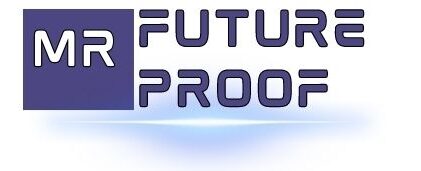Embracing feedback is crucial for personal and professional growth. Constructive criticism allows us to learn, improve, and hone our skills.
In this article, we will delve into the art of receiving feedback and discuss how you can make the most of criticism to propel your career forward.

Credit: social.hays.com
Introduction To Receiving Feedback
Asking for feedback and receiving it can be a daunting experience for most people. However, constructive criticism is critical to growth and development, particularly in personal and professional settings. As such, it’s essential to understand the best practices and the common approaches to receiving feedback before taking any stance.
The Importance Of Receiving Feedback
Receiving feedback is often viewed in negative terms, yet it can be beneficial to our personal and professional growth. Here are some key reasons why receiving feedback is important:
- Feedback helps you identify and build on your strengths.
- It provides constructive criticism to help you improve in areas you may not be aware of.
- It promotes open communication and honesty, encouraging transparency in personal and professional relationships.
Common Approaches To Receiving Feedback
Feedback can be delivered verbally or in writing, and it’s crucial to handle it professionally without becoming defensive or dismissive. Here are some common approaches to receiving feedback:
- Listen actively to the other person and acknowledge their concerns
- Reflect on the feedback given and take time to understand it before reacting
- Ask questions to clarify their remarks to show you’re engaged
- Avoid becoming defensive even if the feedback is negative
The Psychological Barriers To Receiving Feedback
Despite the benefits of feedback, some people struggle to receive it due to psychological barriers. These barriers can include:
- Fear of criticism
- Low self-esteem and confidence
- Preferring to remain in their comfort zone
- Lack of trust in the feedback provider
Receiving feedback is an essential part of personal and professional development, but it’s not always easy. Understanding the importance of feedback, common approaches to receiving it, and the psychological barriers that can hinder its reception is crucial in overcoming such challenges and ultimately embracing the growth opportunities feedback provides.
Understanding The Feedback Process
Why Feedback Is Vital To Growth
As human beings, we all crave feedback, whether it’s positive or negative. Feedback is essential because it provides us with valuable information that we can use to improve ourselves. In fact, feedback is so critical that it can make or break our personal and professional growth.
Here are some reasons why feedback is vital for growth:
- Feedback provides us with an outsider’s perspective. It enables us to see ourselves more clearly, identify our strengths and weaknesses, and take appropriate action.
- Feedback helps us learn from our mistakes. It helps us see where we went wrong and how we can do better in the future.
- Feedback provides us with opportunities for growth. By embracing feedback and making changes, we become better versions of ourselves.
Types Of Feedback You Should Seek Out
Not all feedback is created equal. To get the most out of feedback, you need to seek out the right kind of feedback. Here are some types of feedback you should seek out:
- Constructive feedback that highlights both your strengths and areas for improvement. This kind of feedback is specific, actionable, and non-judgmental.
- Feedback from diverse sources, including mentors, peers, and customers. Seeking feedback from a variety of sources ensures that you get multiple perspectives and insights.
- Regular feedback that provides ongoing guidance and support. This kind of feedback allows you to track your progress and make adjustments as necessary.
Effective Questioning Techniques To Get Helpful Feedback
The way you ask for feedback can significantly impact the quality of the feedback you receive. Therefore, it’s essential to use effective questioning techniques to get helpful feedback. Here are some techniques you can use:
- Start with open-ended questions. Open-ended questions encourage the person to provide in-depth feedback and insights.
- Ask follow-up questions to clarify vague or confusing feedback. Follow-up questions help you get more details and specifics, making the feedback more actionable.
- Focus on specific goals or areas for improvement. This helps the person providing feedback provide more relevant and specific information.
By following these questioning techniques, you can get more in-depth and actionable feedback that will help you grow professionally and personally.
How To Implement Feedback
The Art Of Receiving Feedback: Embracing Growth Opportunities
Receiving feedback can be daunting, especially when it’s constructive criticism. But feedback is one of the most valuable tools we can use to improve ourselves. It helps us to grow, learn and develop much faster than we would on our own.
In this blog post, we’ll explore the art of receiving feedback, focusing on how to implement feedback. We’ll provide practical tips for taking action on feedback, common mistakes to avoid when implementing feedback, and explore the role of mindset in applying feedback.
Practical Tips For Taking Action On Feedback Received
Receiving feedback doesn’t automatically guarantee growth. It’s important to use feedback effectively and apply it to our lives. Here are a few practical tips to help you make the most out of the feedback you receive:
- Take time to reflect: Take the time to analyze the feedback objectively, separate your emotions and reflect on what has been said.
- Be open and receptive: Listen to the feedback with an open mind and be willing to consider different viewpoints.
- Ask for clarification: If you’re unsure of what the feedback means or how to apply it, don’t be afraid to ask for clarification.
- Identify key areas to work on: Pinpoint the key areas where you need to make improvements and create an action plan.
- Let go of defensiveness: Accept feedback with an open mind and avoid becoming defensive or aggressive.
Common Mistakes To Avoid When Implementing Feedback
Implementing feedback can be a delicate process, and it’s easy to make mistakes. Here are a few common mistakes to be aware of and avoid when implementing feedback:
- Rejecting feedback: Avoid rejecting feedback out of hand. Even if you don’t agree with it, use it as an opportunity to learn and grow.
- Dismissing feedback as negative: Don’t dismiss feedback as negative or unhelpful. All feedback, even negative feedback, can provide useful insights.
- Focusing on the person, not the feedback: It’s important to focus on the feedback, not the person giving it. Avoid becoming defensive or taking feedback personally.
- Trying to implement too much too quickly: Don’t try to implement everything at once. Pick one or two key areas to work on and take it slowly.
- Not following through: It’s vital to follow through with your feedback action plan. Don’t neglect the feedback or fail to act on it.
The Role Of Mindset In Applying Feedback
Our mindset plays a crucial role in how we receive feedback and our willingness to learn and grow. Here are some key mindsets to embrace when applying feedback:
- Growth mindset: Embrace a growth mindset, focus on learning and developing, rather than the outcome.
- Embrace continuous improvement: Always work towards continuous improvement, and use feedback as an opportunity to learn.
- Be curious: Approach feedback with curiosity, and be willing to explore and challenge your assumptions.
- Stay positive: Stay positive and focus on the opportunities for improvement, rather than the negatives.
- Be proactive: Take a proactive approach to feedback and use it as an opportunity to improve and develop your skills.
Implementing feedback is an essential part of personal and professional development. By being open-minded, receptive, and proactive, we can use feedback as a valuable tool for growth. Remember to focus on the feedback, avoid common mistakes and embrace a positive mindset.
By doing so, you will be on the path to achieving your full potential.
Developing Your Own Feedback Process
The Benefits Of Establishing Your Own Feedback Process
Developing a feedback process can be challenging, especially if you’re used to receiving feedback sporadically or not at all. Nonetheless, the benefits of creating your own feedback process include:
- Gaining valuable insights into your performance
- Improvement in future work
- Increased self-awareness
- Opportunities for growth and development
Best Practices In Developing Your Feedback Process
If you’re looking to develop your own feedback process, there are some best practices to consider:
- Define the goals and objectives you want to achieve through the feedback process
- Establish a clear system for receiving feedback
- Determine the individuals you want to receive feedback from
- Determine the frequency of feedback
- Find a method for collecting feedback
- Set specific guidelines for the feedback
Self-Reflection And Gratitude Practices To Encourage Continuous Improvement
Continuous improvement is critical to the success of any feedback process. Consider implementing self-reflection and gratitude practices in your feedback process to encourage continuous improvement.
- Self-reflection: Take time to analyze past feedback, identifying trends, and areas for improvement. This analysis can help you determine the effectiveness of your feedback process and where to focus next.
- Gratitude practices: Expressing gratitude to those who provide feedback, regardless of whether it was positive or negative, can promote continued feedback in the future.
By developing and following your feedback process’s best practices, you’re creating a framework for continuous learning, growth, and improvement. Embrace this process, taking each bit of feedback as a valuable learning opportunity.
Frequently Asked Questions Of The Art Of Receiving Feedback: Embracing Growth Opportunities
How Do I Receive Feedback Without Feeling Defensive?
Start by listening actively, asking for clarification, and practicing empathy. Remember, feedback is an opportunity to learn and grow.
What Are Some Common Mistakes People Make When Receiving Feedback?
Some common mistakes include becoming defensive, dismissing the feedback, or not acting on it. It’s important to approach feedback with an open mind.
How Can I Use Feedback To Improve My Personal Growth?
View feedback as an opportunity for growth and improvement. Take the feedback seriously, reflect on it, and develop an action plan to address any areas of improvement.
Conclusion
As we wrap up our discussion on the art of receiving feedback, it is important to remember that constructive criticism is essential for growth and success. By embracing feedback and learning how to receive it in a positive way, you can open new doors and opportunities for personal and professional development.
While it can be difficult to accept criticism at times, try to view every critique as a chance to improve and evolve. Remember to listen actively, ask clarifying questions, and choose which feedback to act upon. Finally, always take the time to thank your peers, colleagues or mentors for their input and insight.
By implementing these strategies, you’ll be well on your way to achieving your goals and becoming the best version of yourself. Let’s continue to embrace feedback and celebrate the stepping stones on our journey to success!

